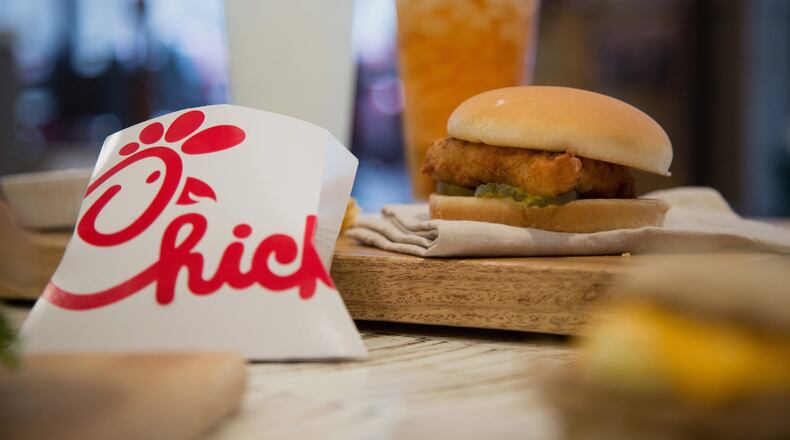Chick-fil-A won’t have poutine on the menu when it opens a restaurant in Toronto on Friday and makes its latest run at going international.
Even without the Canadian melding of fries, curds and gravy, the Atlanta-based chain has bigger plans as it exports its chicken sandwiches and waffle fries with what it describes as its first full-service franchised restaurant outside the United States.
Chick-fil-A reiterated it plans to open 15 restaurants in the Toronto area within five years, plans it first disclosed last year. That’s the largest-ever international push for the company.
What comes after that?
“While we hope to serve more global communities in the future, we do not have any additional international expansion plans to announce at this time,” the company wrote in an email to The Atlanta Journal-Constitution on Wednesday.
Still, Chick-fil-A has quietly tested temporary pop-up outlets in the United Kingdom, according to media reports there.
Domestically, Chick-fil-A is on a growth tear. It is now the third-largest restaurant chain in the United States, behind only McDonald's and Starbucks, according to one recent ranking of estimated revenue. Yet, with about 2,400 U.S. restaurants, Chick-fil-A has fewer outlets than most of its fast-food competitors.
The chain only opened its first location inside Seattle's city limits earlier this year. And its first Manhattan restaurant opened just four years ago.
In the 1990s, Dan Cathy, a son of founder Truett Cathy, contemplated pushing into Europe, but instead expanded into South Africa with a few limited-service restaurants. The venture fell short of expectations and in 2001 the last of the restaurants closed.
The experience sharpened Truett Cathy’s resolve to focus on growth in the U.S.
In South Africa, "it was so awkward trying to get merchandise there, as well as employees. It was too far, too fast," Cathy, who died in 2014, said in a 2012 AJC interview.
Toronto isn’t Chick-fil-A’s first foray into Canada. A limited-menu licensed outlet opened and eventually closed at a university in Alberta in the 1990s. Another at Calgary International Airport has since been shuttered during work there.
Dan Cathy, who is now Chick-fil-A’s CEO, in recent years mentioned possible expansion into Europe and Asia once the company mastered profits in U.S. markets such as New York City.
Toronto, Canada’s biggest city, is close to the U.S. border. But moving into other distant new markets comes with extra challenges, said Ken Bernhardt, a retired Georgia State University marketing professor who consults for Chick-fil-A and in the 1990s helped it design customer research in South Africa.
New supply chains have to be set up and marketing is often different than in the U.S., he said, “so the smart thing is to go slow and learn as you go.”
The menu itself may be less of a challenge. Offerings at Chick-fil-A’s first Toronto restaurant look much like what fans in Georgia would expect. There are tweaks, though. Items, including the chain’s signature sandwich, will use some Canadian-sourced ingredients. And the store will offer coffee blends roasted locally and “specifically developed for Canadian tastes.”
About the Author
Keep Reading
The Latest
Featured



